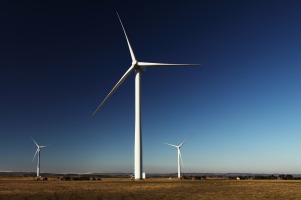Big data, mega efficiency: How data can improve plant productivity

Back in 2008, Google applied its massive data-collecting power to predict the spread of disease. Launching a site that analysed millions of searches related to influenza, Google Flu Trend collected data that proved to correspond with actual incidences of the illness. This gave the potential to foresee flu outbreaks, allowing healthcare professionals to better plan their responses.
Here Nick Boughton, digital lead at industrial systems integrator Boulting Technology, explores what can be done with data and how analysing it can help plant managers make more informed decisions.
Data analysis technology has come a long way in the past decade and its significance is ever-increasing. It isn’t merely about generating big data but creating usable and valuable information that can create actionable insights to incorporate into an organisation’s processes. In the energy sector, the reduction in large coal-based power plants and the increase of microgenerators and renewable energy farms has created the need for vast amounts of data to be accessed remotely.
This is because it is no longer financially viable or efficient to have a team of engineers supervising power generation at one site alone. Instead, multiple facilities are now monitored remotely thanks to increased connectivity and data collection.
Time to shine for solar energy
The year 2017 was record-breaking for renewable energy, characterised by the largest ever increase in renewable power capacity, as well as by falling costs and rising investment increases. Research by renewables policy organisation REN21, showed that an estimated 178 gigawatts of energy capacity for renewables was added that year, with solar photovoltaic proving the star performer, as its energy outputs increased by about 33%.
However, renewable energy comes with its own challenges. For example, solar and wind are intermittent resources, so additional support is required to maintain a stable energy supply.
The shift in power generation towards renewables and microgenerators is prompting energy and utilities businesses to go digital. Companies are now using data collection and analysis to ensure proper operation and maintenance of these often-unmanned assets. By turning to the Internet of Things, companies can integrate more sustainable power networks into the generation mix, using advanced communications networks, remote monitoring capabilities and sensors.

Nick Boughton
Sensing maintenance
One popular use of collected data is condition monitoring. By directly attaching signal devices to electrical meters, or even solar and wind controls, utilities businesses can to collect data on vibrational changes or variations in voltage.
Collecting data on equipment operation and performance gives utilities companies a wider understanding of their installations, as well as providing opportunity to guard against disruption should the sensor detect an anomaly.
The large quantity of data collected by smart sensors is particularly useful for renewable energy applications. Operators can pull data from generators like wind turbines to prevent component failure and to identify any design tweaks that could improve efficiency. Sustainability can then be furthered using data analytics, driving better decisions about costs, materials and the amount of energy used — or more notably, wasted.
The weather forecast
Although renewable power generation is on the rise, the changeable resources ─ wind and sunlight ─ can hinder overall production. Fluctuating resources can make it difficult for power plants to consistently operate to their maximum potential and ensure a consistent yield of power. Digitalisation is rapidly changing this scenario. Solar and wind power plants have always collected data, but advancements in predictive analytics and Machine Learning now mean that more can be done to plan for instability.
Forecasting technology can use data gathered from monitoring devices and predictive technology to forecast the weather in renewable power farms well in advance. With this higher level of insight, utilities companies can better manage the variable nature of renewable energy sources and more accurately foresee the amount of energy that can be redirected into the power grid.
Energy organisations will also be able to easily integrate other conventional sources such as coal and gas if weather conditions do not allow renewable sources to fulfil their full capacity. Utilities managers can therefore make more informed decisions and predictions as to when and where they can take electricity from, reducing the threat of instability.
Seamless integration
To integrate renewables into the grid, we need a smart grid, which involves big data collection, archiving and analysis. Boulting Technology is an experienced, independent systems integrator, that can recommend the best approach for a plant’s unique requirements and capabilities. This includes ensuring the seamless integration of data-analysis technology, which can be retrofitted to prevent the heavy cost of upgrading.
Digitalisation has already provided a number of sectors with more opportunities to predict and plan for the future. As energy applications continue to become more sustainable, much like Google’s flu-tracking, their reliability must be monitored. To improve and enable a more efficient use of resources, data must be analysed, turned into actionable insights and implemented, not be collected and left to be forgotten.
The author of this blog is Nick Boughton, digital lead at systems integrator Boulting Technology
Comment on this article below or via Twitter @IoTGN
